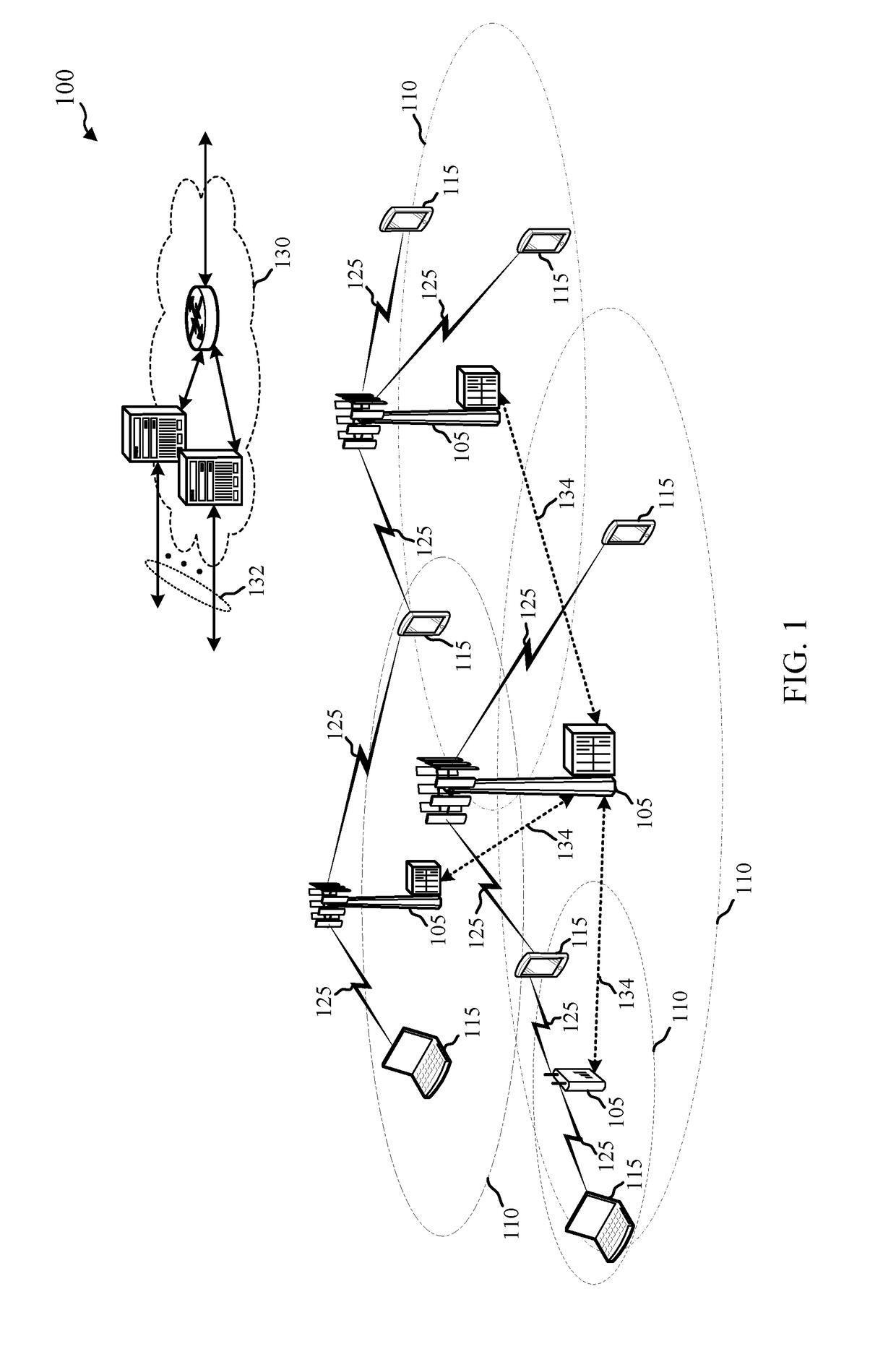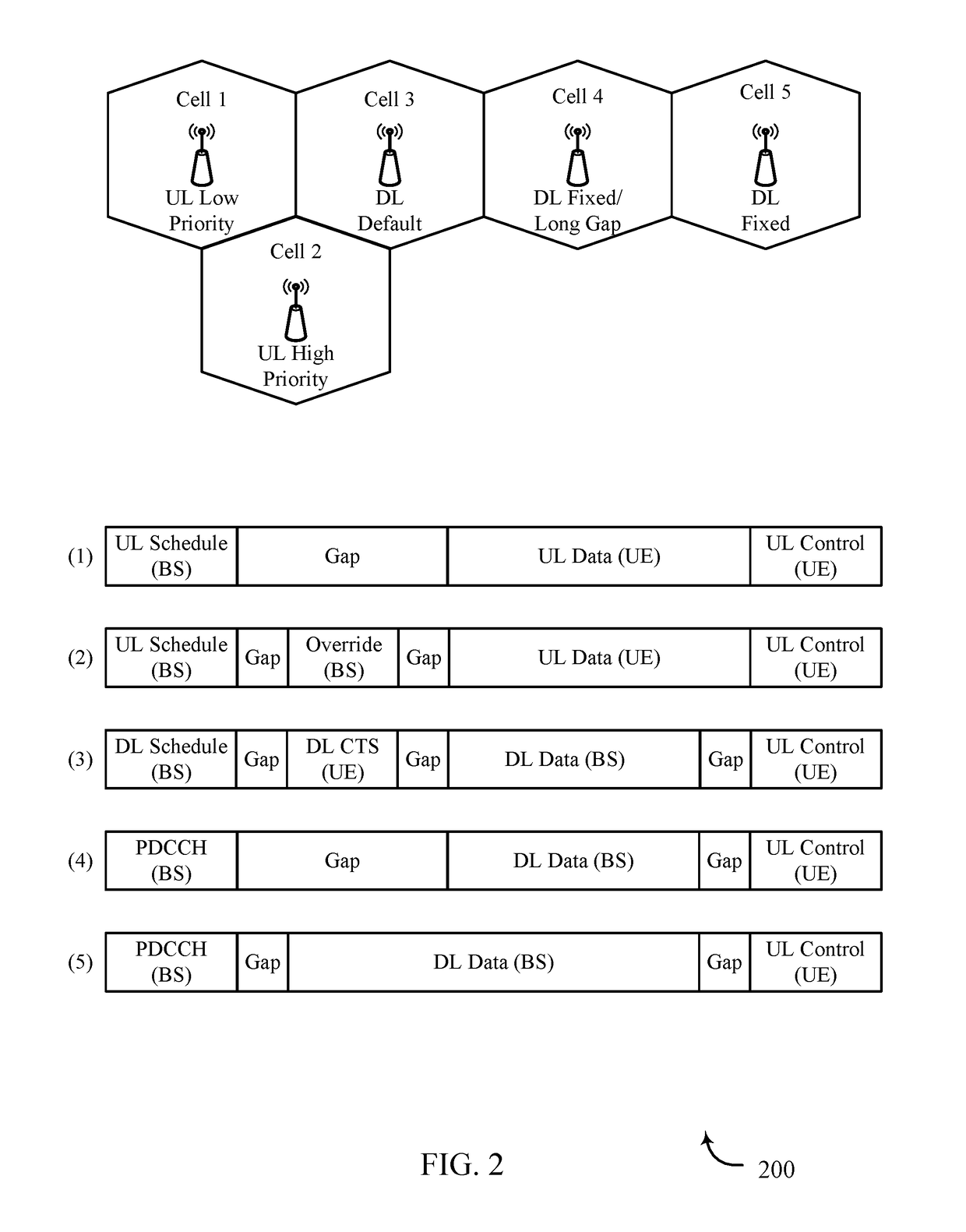Frame configuration of dynamic uplink/downlink switch
- Summary
- Abstract
- Description
- Claims
- Application Information
AI Technical Summary
Benefits of technology
Problems solved by technology
Method used
Image
Examples
Embodiment Construction
[0034]Conventional frame switching techniques in a TDD synchronized wireless communication system may include each cell (or base station) to switching for the frame. For example, when a cell switches an UL frame to perform a high priority DL communication, each cell may also be forced to switch the frame to DL communications. That may be inefficient when, for example, the other cells have UL communications to perform during the frame.
[0035]The described features relate to improved systems, methods, and / or apparatuses for dynamically switching a frame (e.g., UL-DL switching and / or DL-UL switching) where not every other cell in the wireless communication system is forced to switch the frame. For example, a cell may determine to switch a frame (e.g., the cell may have data to communicate with a UE in its coverage area during the frame). The cell may transmit frame configuration message that informs other cells and / or UEs that the frame is a switching frame, e.g., that the frame is bein...
PUM
 Login to View More
Login to View More Abstract
Description
Claims
Application Information
 Login to View More
Login to View More - R&D
- Intellectual Property
- Life Sciences
- Materials
- Tech Scout
- Unparalleled Data Quality
- Higher Quality Content
- 60% Fewer Hallucinations
Browse by: Latest US Patents, China's latest patents, Technical Efficacy Thesaurus, Application Domain, Technology Topic, Popular Technical Reports.
© 2025 PatSnap. All rights reserved.Legal|Privacy policy|Modern Slavery Act Transparency Statement|Sitemap|About US| Contact US: help@patsnap.com



